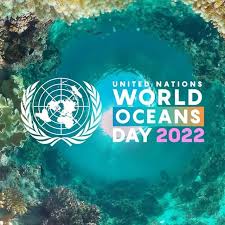 World Rainforest Day is observed on June 22 every year across the world. This day is set aside to raise awareness about rainforests and also about all the biotic species that live in them. World Rainforest Day aims to encourage people to learn more about rainforests and join efforts to protect and preserve these forests for generations to come. Rainforests have been disappearing and taking the rich diversity of flora and fauna with them because of increasing deforestation and climate change. World Rainforest Day was instituted to halt this disappearance by reminding people of the importance of rainforests.
World Rainforest Day is observed on June 22 every year across the world. This day is set aside to raise awareness about rainforests and also about all the biotic species that live in them. World Rainforest Day aims to encourage people to learn more about rainforests and join efforts to protect and preserve these forests for generations to come. Rainforests have been disappearing and taking the rich diversity of flora and fauna with them because of increasing deforestation and climate change. World Rainforest Day was instituted to halt this disappearance by reminding people of the importance of rainforests.
HISTORY OF WORLD RAINFOREST DAY
World Rainforest Day is observed throughout the world and aims to educate people about the importance of rainforests — why they are important and the diversity of life that lives in them. By educating people, World Rainforest Day aims to encourage more people to join the effort to protect and preserve rainforests for future generations.
Rainforests are lush forests that have a continuous tree canopy. The entire forest is heavily dependent on moisture. Rainforests do not have any forest fires. Flora, fungi, epiphytes, lianas, and trees forming a closed canopy, are found in rainforests. Many popular houseplants like the Pothos and Monstera, are native to rainforests. A majority of living organisms — birds, animals, plants, and trees — are native to rainforests. A large number of species of mammals, reptiles, birds, invertebrates, and amphibians are found in rainforests.
Rainforests are necessary as they are an important source of freshwater for humans. Additionally, they absorb carbon dioxide and protect the earth from the effects of climate change. They are an important natural resource directly and indirectly. Apart from freshwater and the production of oxygen, several ingredients used in everyday life and manufacturing are derived from rainforests. Timber, meat, animal products, plant derivatives, and tourism are among the other benefits offered by rainforests.
 Every year on June 8, World Ocean Day is commemorated to remind people of the importance of the oceans and the major role they play in everyday life. According to the United Nations, the day intends to raise awareness about the impact of human activities on the oceans and to create a united movement for the species of the ocean. Besides, the day is also observed to make raise public awareness of the ocean and its resources in order to promote global ocean and resource sustainability. The day intends to highlight the various resources that mankind derives from the ocean, as well as the various threats that the ocean faces.
Every year on June 8, World Ocean Day is commemorated to remind people of the importance of the oceans and the major role they play in everyday life. According to the United Nations, the day intends to raise awareness about the impact of human activities on the oceans and to create a united movement for the species of the ocean. Besides, the day is also observed to make raise public awareness of the ocean and its resources in order to promote global ocean and resource sustainability. The day intends to highlight the various resources that mankind derives from the ocean, as well as the various threats that the ocean faces.  Contemporary climate change includes both the global warming caused by humans, and its impacts on Earth’s weather patterns. There have been
Contemporary climate change includes both the global warming caused by humans, and its impacts on Earth’s weather patterns. There have been